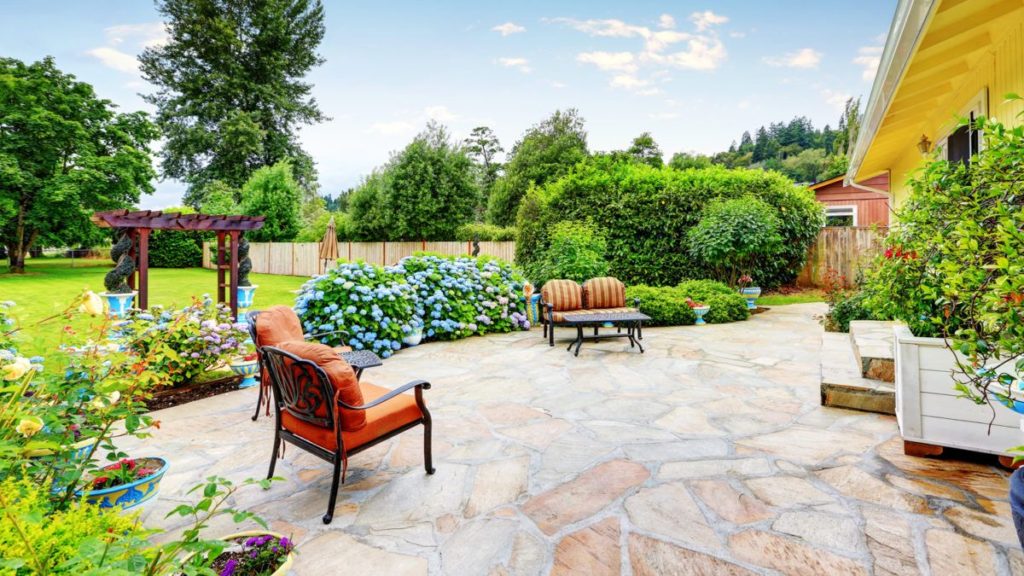One of the best ways to convey authenticity in your landscape design is by using flagstone. This is because when you use these flat stones, you will create a hand-made feel to your yard that also looks timeless. With the huge variety of modern and rustic cut flagstones, you can demonstrate your individual taste and style. In this guide, you will first discover the origins of these flat stones and learn about their creation. Next, you’ll learn about the different types and the best practices for using them. Third, you’ll gain valuable knowledge in the art and science of the installation of this material. And finally, you will gain inspiration and knowledge as a result of viewing some of our best projects.
The Different Types
There are two popular main types: patio and select. Patio pieces are smaller, usually 12” to 18” and thicker, and are most often used for stepping stones, outdoor pathways or patios. Because of their smaller size, they are typically palletized laying down, which helps prevent breakage during shipment. on the other hand, select flagstone, known as “standup”, comes in large, thin slabs of 18” to 36”. Because of their large size, they are usually palletized vertically. Flagstones come in many shapes and sizes, including rectangular and square. However, they are also available in more natural, jagged varieties.
The History of Flagstone
Flagstone has been in use in one form or another for thousands of years. Back in the early 1900s, people saw it as an improvement over cobblestone, and it’s easy to see why. Since stonemasons can chisel it by hand into a very flat surface, it is a simple way to create a flat paving surface. It sees usage as countertop material or even as a paving substrate, and also as a walkway or roadway. People even use them as roofing and siding! The most common application is for flagstone patios and stepping stones.
Flagstone Designs and Shapes
The great thing about this natural stone is that you can shape it to create many different, unique patterns! After all, the only limit is your imagination with this material. Just remember that you will want to tie your landscape together. This means that if you want a modern, clean look, you need to make sure to stick with a more rigid, repeating pattern, to say nothing of clean lines. On the other hand, for a rustic and natural look, you can go for irregular sizes and also random shapes.

